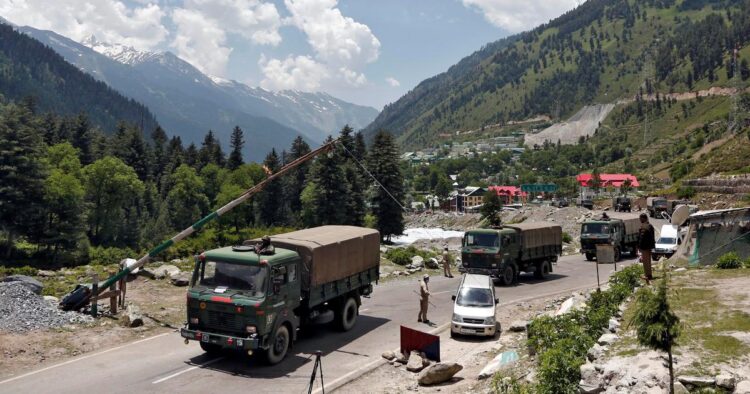In order to bolster border infrastructure, India and China are ramping up construction of villages in their respective border areas. India has fast-tracked construction of model villages under the Vibrant Village Programme which was initiative in February 2022. The Arunachal Pradesh government has started development of model villages such as Kibithu, Kaho and Meshai, the farthest border villages in the state with Kaho being the easternmost.
A total of 662 border villages were identified by the Vibrant Villages Programme (VVP). Seventy-seven of these villages are in Arunachal Pradesh. Of this 23 have been marked as priority villages. Sources in Defence and security establishment have said that in Lohit, thirty-one villages are being constructed seven of which are on priority list. Nine of the twenty-three villages are further adopted under Operation Sadbhavana, the Indian Army’s outreach initiative.
In Dibang, 22 model villages are being constructed with five on priority while in the Dau Delai valley near Hayuliang in Anjaw district, a total of 24 villages are being made with 11 on priority. The other infrastructure development projects being undertaken in these valleys are in the education, health, energy, tourism agriculture and waste management sectors sources said.
Meanwhile China has so far built more than 1,20,000 km of roads along with 30 border airports, sources further said. Last year alone, nearly eight to ten villages across the Indian Army’s 3 Corps, headquartered in Dimapur have come up on the Chinese side. Of the 628 Xiaokang (moderately prosperous villages) that China has constructed all along the Line of Actual Control (LAC) nearly have come up in Tibet along Indian border.
With nearly USD 30 million for infrastructure development, sources have said that China has taken concerted efforts in building roads and Chinese border settlements known as Xiaokang. Other development in infrastructure includes road networks, air strips and hydel park.
In order to enhance communication and connectivity along the LAC, the Indian Army has taken several measures such as development of communication networks and amping up aviation infrastructure.
To improve communication, the Army has set up Optical Fiber Cables and radars in forward areas. The operational challenges in the region remain mainly due to altitude differentials in high mountainous region. Another feature of the terrain in the region is the existing of alpine jungles and river valleys. These factors coupled with extreme weather pose a tough challenge to the Indian Army.
According to a source which said as per part of military operations connectivity through roads and tracks remain important. Domination of the LAC and enhancement of infrastructure capacity, communication networks, the capability for operational response remain under the Army 3 Corps.
Other Infrastructure developments happening in the region includes development of helipads and airstrips along with roads, tracks, bridges at isolated posts, defence infrastructure development and Billeting. The sources added that enhancement of the survivability remains the key goal in these regions.
To bolster road connectivity, a number of connectivity projects are in works. The Trans-Arunachal Highway which is 2407 kilometers long has progressed 92 percent. This Highway runs from Arunachal Pradesh. The road once complete will connect all the district headquarters of the state.
Furthermore, to enhance connectivity, another project the Trans Frontier Highway is in its initial stages of construction. The project will enable connectivity of villages situated along the Mc Mahon Line on the India-China border. This will provide inter-valley connectivity. Tezu and Pasighat airstrips situated in Arunachal Pradesh came up two years back.



















Comments